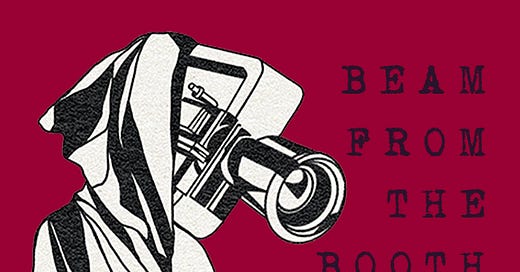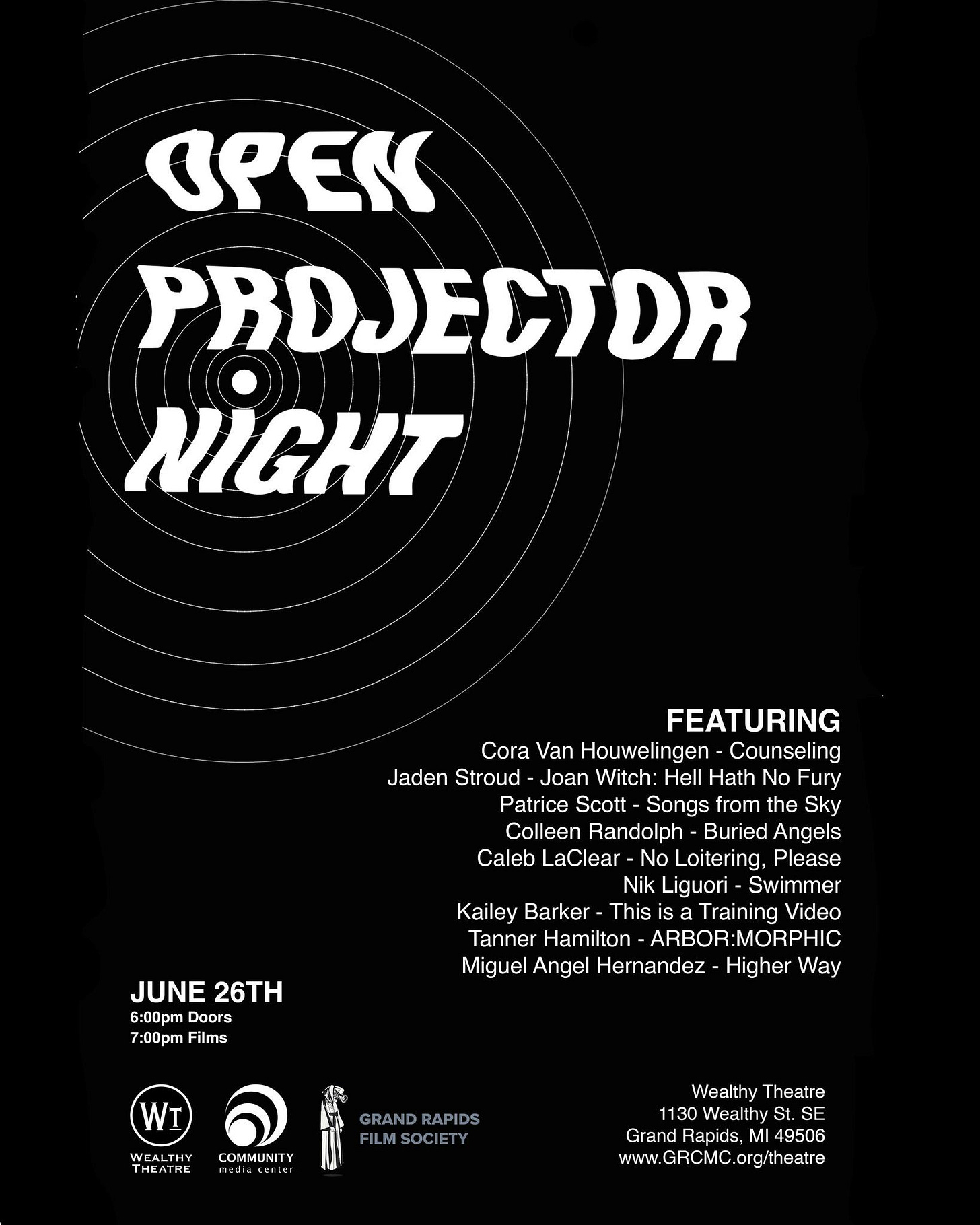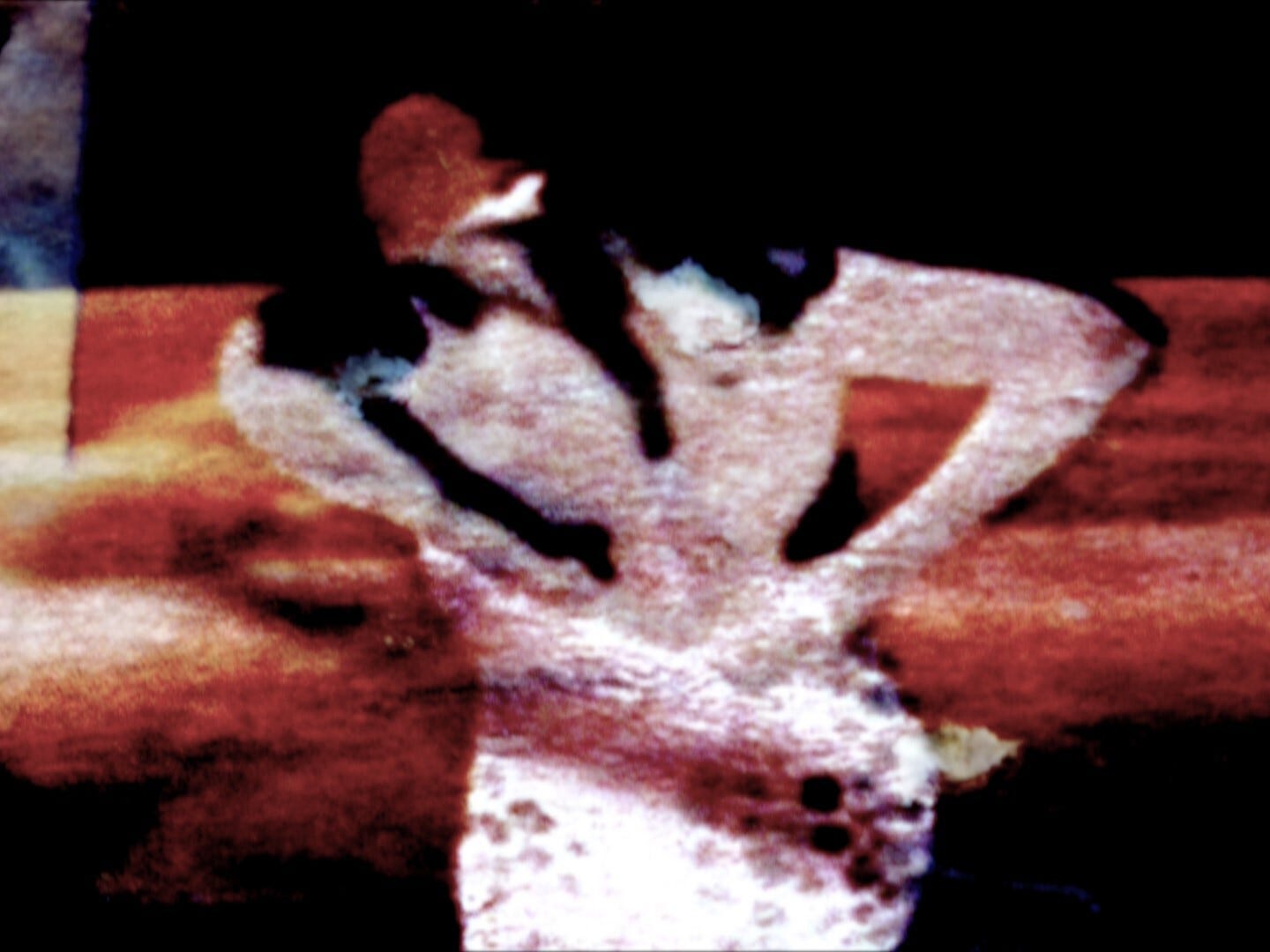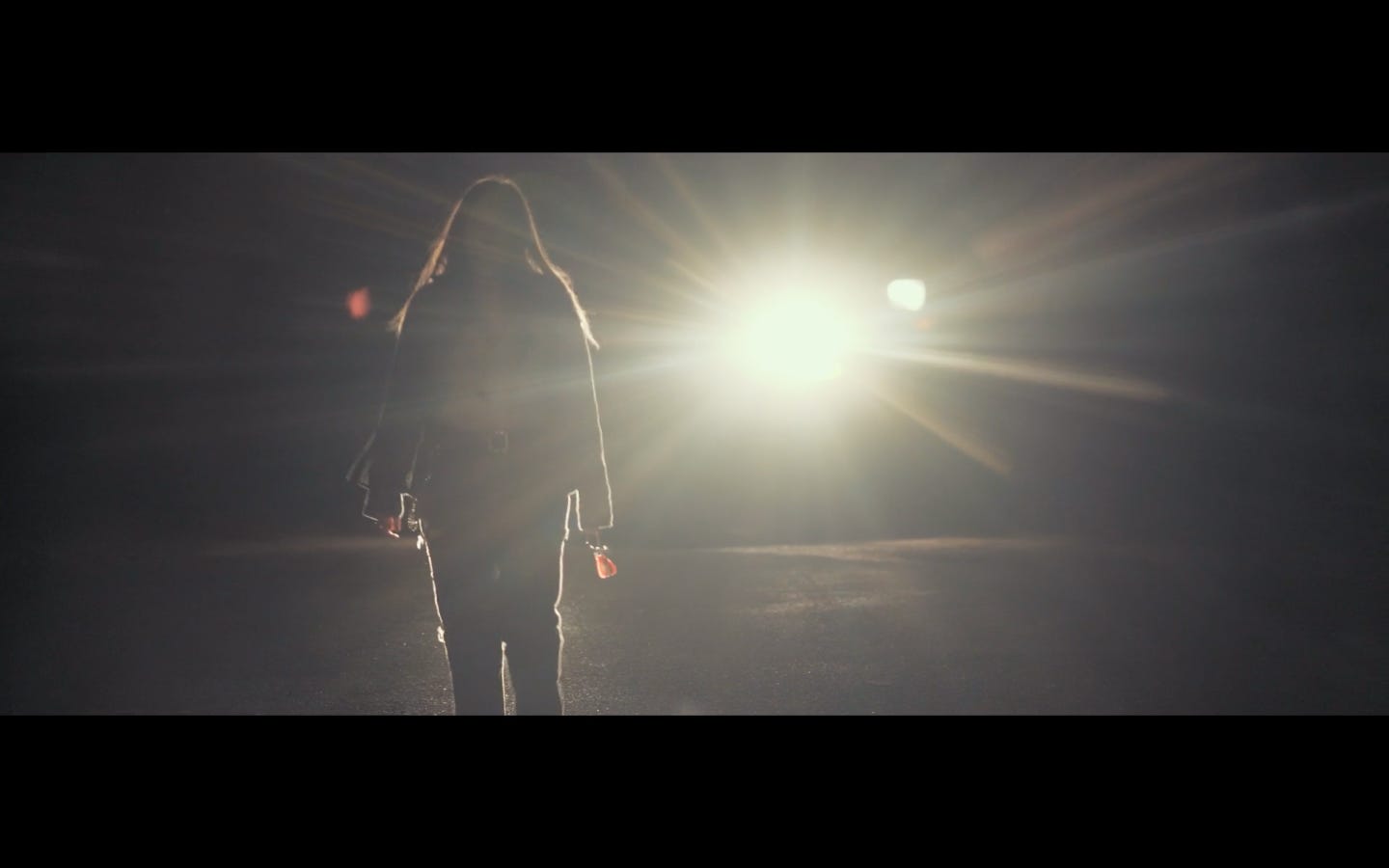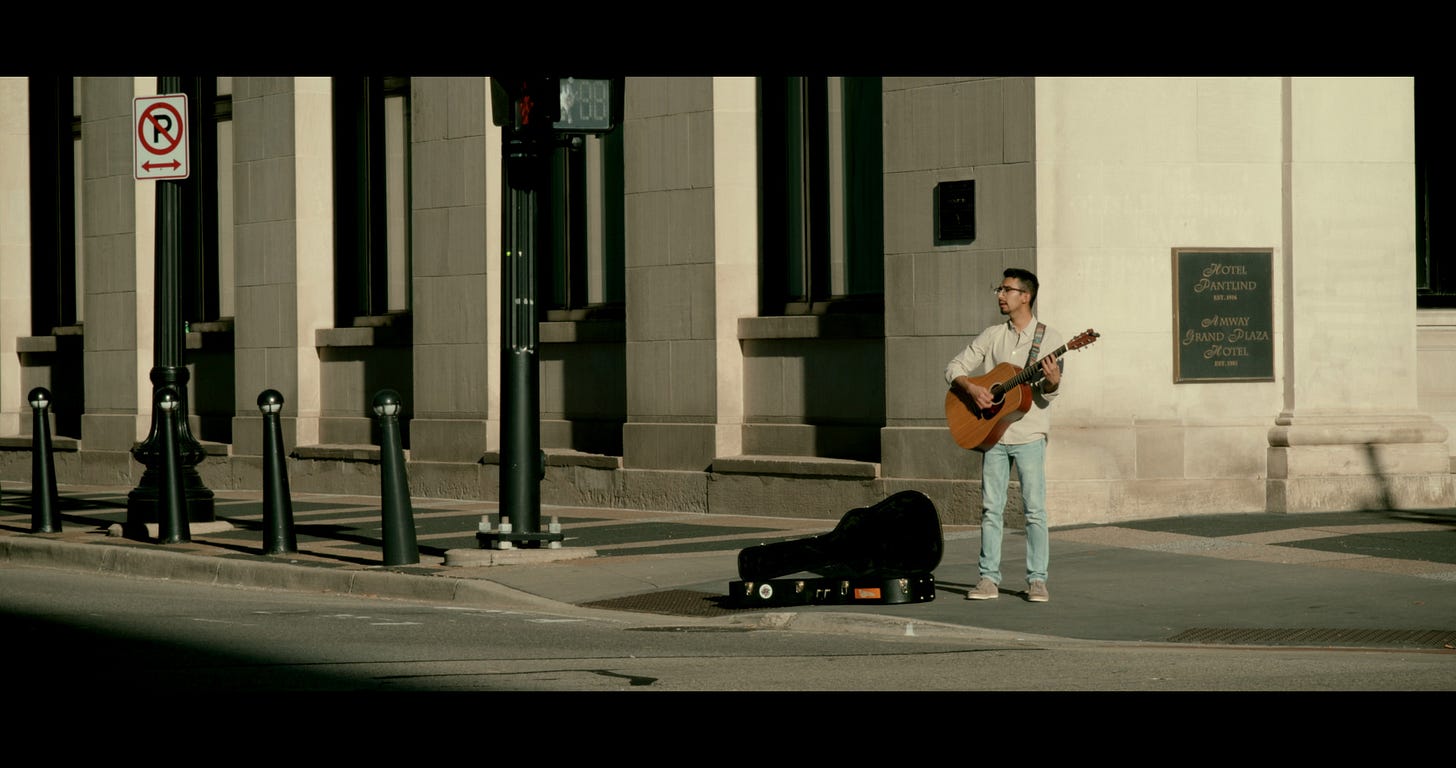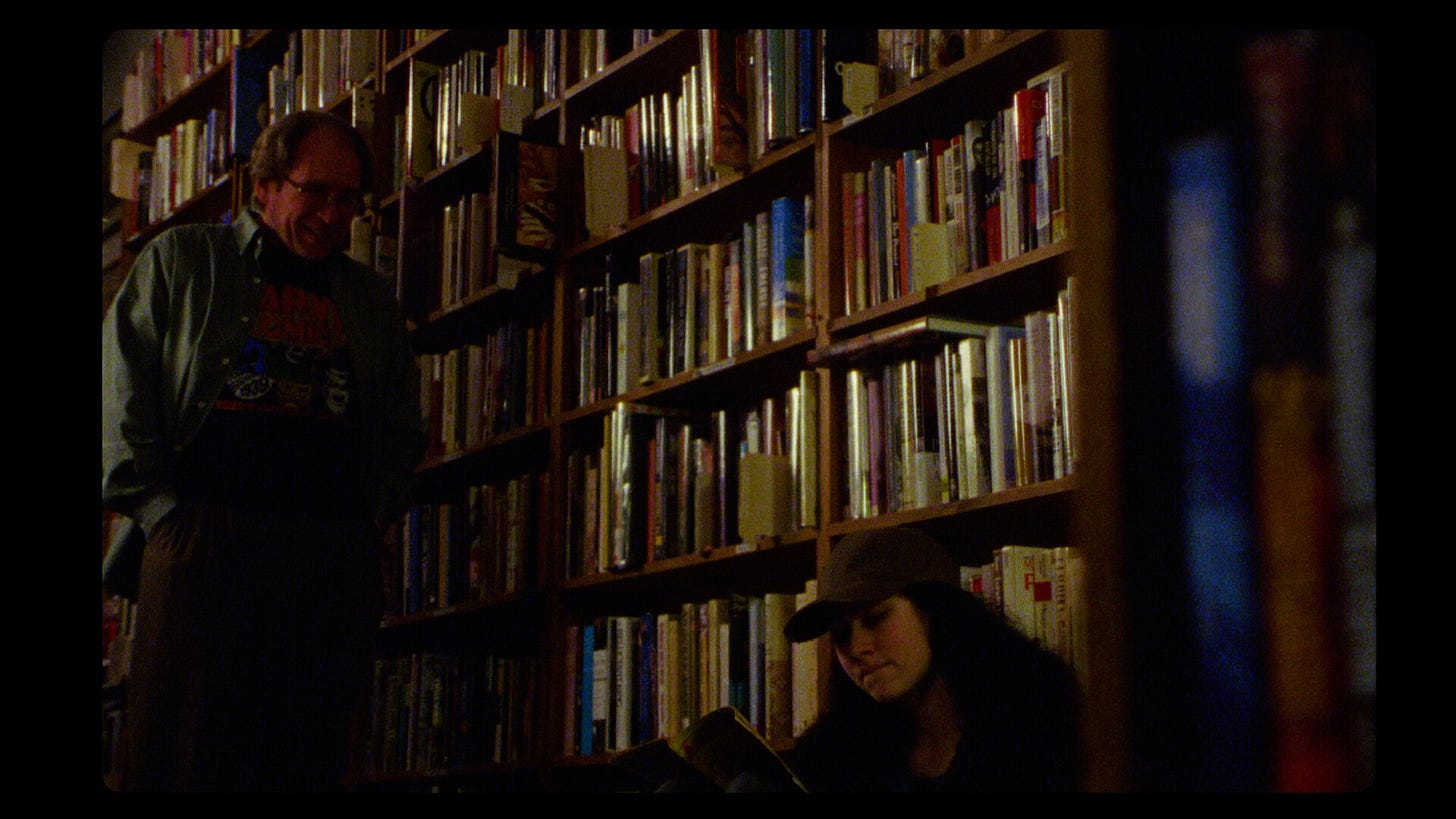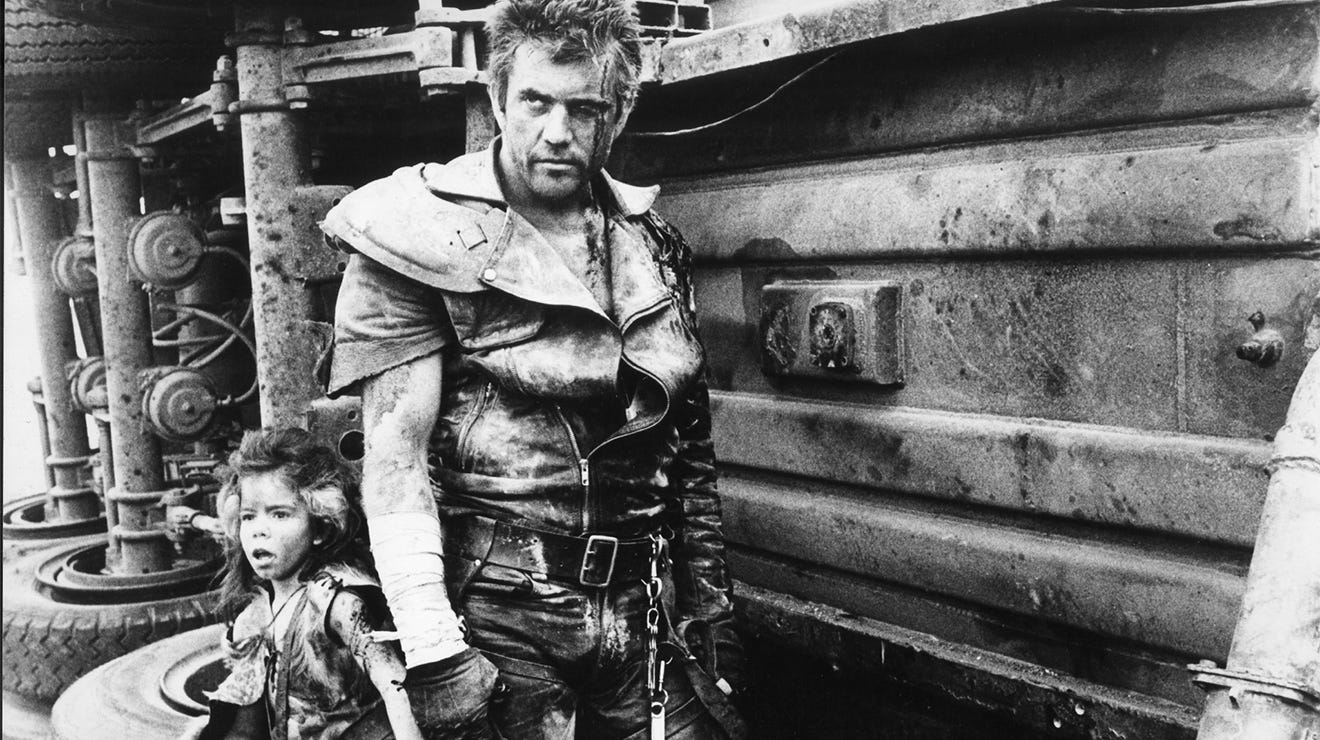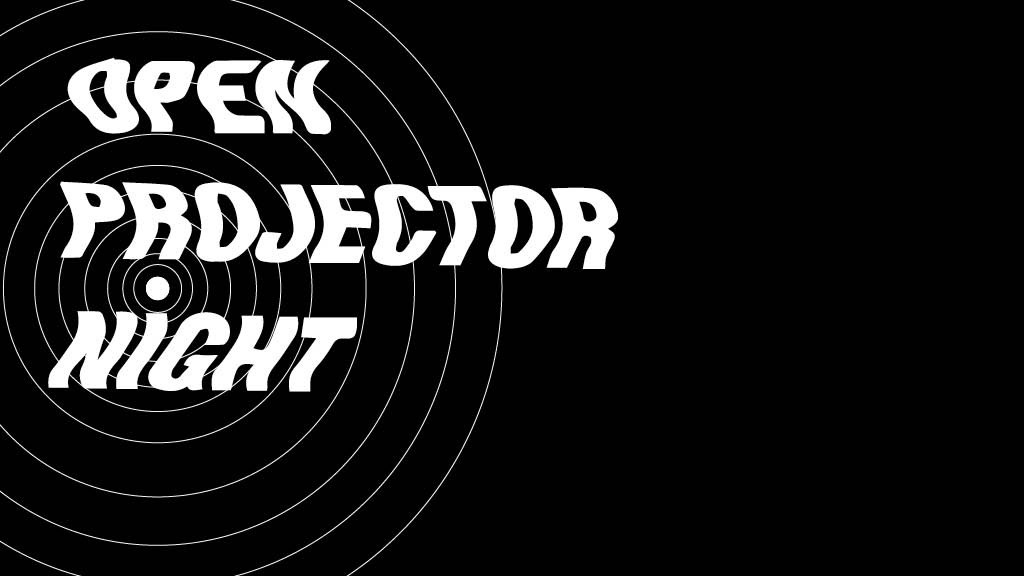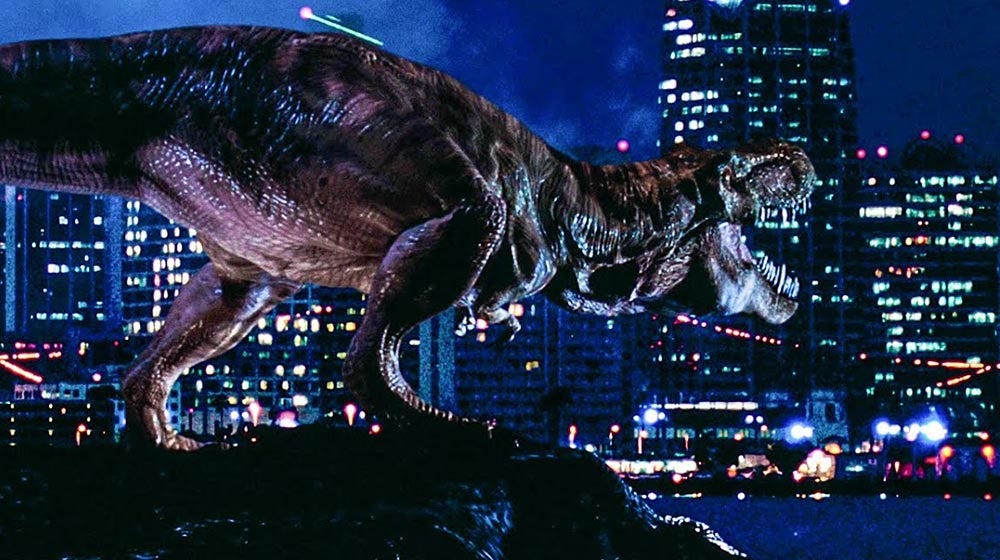[EDITED BY: GRIFFIN SHERIDAN & SPENCER EVERHART]
Hello and welcome back to an all-new installment of BEAM FROM THE BOOTH brought to you by GRAND RAPIDS FILM SOCIETY!
TONIGHT at 8:00pm, the SUMMER OF SEQUELS series officially begins! If you missed our preview of the series back in ISSUE #60, GRFS is celebrating it’s second year with an entire summer’s worth of programming that celebrates some of our favorite sequels, featuring both classics and some more underrated picks.
It all starts tonight with George Miller’s MAD MAX 2: THE ROAD WARRIOR!
Haven’t seen the original Mad Max? That’s okay, we prepared. Check out our piece about it from last issue, it has all the context you need.
Plus, don’t forget that we are offering special SUMMER OF SEQUELS LOYALTY CARDS to the committed cinephiles that plan on attending ALL SEVEN of our Summer of Sequels screenings.
Those interested can bring their punch card back to each consecutive screening, leading to our final Summer of Sequels event, THE COLOR OF MONEY on SEPTEMBER 6th. It is at this climactic final screening that we will collect any and all punch cards with seven punches and enter them into a drawing for our grand prize: ONE YEAR OF FREE ADMISSION TO GRAND RAPIDS FILM SOCIETY EVENTS.
But you can only participate if you pick up your card at this first screening tonight!
If all this sounds fun, join us! Remember, tickets for every screening in the series are already available on our website! (They’re cheaper than buying them at the door, too.)
And later this week, on WEDNESDAY (6/26), OPEN PROJECTOR NIGHT returns once again to celebrate independent filmmakers with a Michigan connection!
Check out our extensive preview of the program, featuring interviews with each filmmaker, below!
OPEN PROJECTOR NIGHT: JUNE 2024 PREVIEW
[BY: SPENCER EVERHART]
OPEN PROJECTOR NIGHT is a series we continue to be absolutely thrilled to present, and we’re back at it again! We highly encourage you all to join us on the evening of Wednesday, JUNE 26th, to support and celebrate local independent filmmaking.
Our very own Spencer Everhart (who also helps in selecting works for the event) interviewed each filmmaker about their short film as a preview of this edition’s lineup for you all. Check it out...
Counseling (Cora Van Houwelingen)
Mel, the local church janitor, takes it upon himself to comfort a man the day after a funeral for a young boy.
Spencer Everhart: How did you originally get into cinema and what has your journey been as a filmmaker up until now?
Cora Van Houwelingen: I grew up watching movies with my family almost every night. It was just how we spent time together. I remember thinking after every film we would watch: ‘wow, I want to be like the main character when I grow up.’ Eventually, I realized it’s not practical to have 300 different lives or skills, and what I really wanted to do was have the ability to explore them through cinema. Somehow, even after that, I still thought this was an impractical idea, opting to major in engineering — but after a near-death experience, I realized life is too short to be practical.
What was the primary inspiration behind your film? How did the project come about?
I actually made this film in my Fiction Filmmaking I course at Grand Valley State University during the winter semester. I had the idea in the fall to write a film with only one man talking, and I liked the idea of a church so after a couple weeks this is what I came up with!
What was the biggest challenge you faced while making this movie, and how did you overcome it?
The biggest challenge when making this film was trying to make it still interesting when it’s literally ten minutes of a guy just sitting. It took a few drafts, but I eventually got it there by just bringing stuff from my own life into it. By making it more relatable to me, I was able to put more passion into it and make it more believable.
What about this project are you most proud of?
I think overall I’m most proud of the ending. We had a lot of doubts of whether or not it was gonna hold up and make sense, but I think it definitely does even though it’s subtle.
This is a Training Video (Kailey Barker)
A worker gives the audience tips and rules for their new job. During the explanation a strange creature can be seen lurking in the background watching the worker. Eventually the creature comes closer and begins to speak its mind. Ultimately, the worker is not able to overcome the force of this being.
Spencer Everhart: How did you originally get into cinema and what has your journey been as a filmmaker up until now?
Kailey Barker: My journey began when I was in high school and had to make a short satire skit for one of my English classes (it was a Billy Mays parody). I loved every part of making this project and continued to make a few more skits with my friends until I graduated. During my freshman year at Grand Valley State University, I joined the student organization Grand Valley TV. During my sophomore year, I switched into the film major where I continue to grow my skills and discover new things I love about the filmmaking process.
What was the primary inspiration behind your film? How did the project come about?
This film also came from a class project; specifically, my Experimental Film & Video course. I originally was having a hard time coming up with an idea I liked for this project but found inspiration from a few shorts I found online.
What was the biggest challenge you faced while making this movie, and how did you overcome it?
The biggest challenge I overcame while making this film was creating the idea. I didn't even know where I wanted to start. I worked through this by choosing a topic and then thinking of ways I could convey that topic. I started vague and worked my way down to the specifics.
What about this project are you most proud of?
I am most proud of everything in this short, but I think I am most proud of the concept. It was a hard process, but I ended up with something I loved — which was very rewarding.
Joan Witch: Hell Hath No Fury (Jaden Stroud)
Spencer Everhart: How did you originally get into cinema and what has your journey been as a filmmaker up until now?
Jaden Stroud: I originally got into film through my high school video production course. I really liked editing and the group I made and decided to attend Grand Valley State University based on the good things I had heard about their film program. From there, I met a lot of great people in the major that really kept me in the industry. I am primarily a sound guy, whether on-set production mixing or post sound design.
What was the primary inspiration behind your film? How did the project come about?
The primary inspiration for the film was John Wick: Chapter 4, which I saw after wrapping up a different project. Afterwards, I decided I wanted to try and make something similar as my Senior Thesis. Along the way, the story changed to be less action-heavy and a bit more character-based.
What was the biggest challenge you faced while making this movie, and how did you overcome it?
One of the biggest challenges would have to be the time I didn’t have in pre-production. I was a full-time college student, an RA, had a job, homework, and working on four other projects in the weeks leading up to it. I really only made it through thanks to the hard work and support everyone around me gave; very big shoutout to my producer and editor Elena Chiu who really made the whole thing happen.
What about this project are you most proud of?
I’m really most proud of the cast and crew for delivering a stellar project. The crew was made up of GVSU students, both current and alumni, who absolutely killed it. The cast as well — I got extremely lucky getting their auditions, and I’m extremely proud and happy that I got to work with them.
Swimmer (Nik Liguori)
A visual fantasia of synaptic processes and the reanimation of personal memory, set to a nautical soundscape first heard in a dream. “Go down to the sea...”
Spencer Everhart: How did you originally get into cinema and what has your journey been as a filmmaker up until now?
Nik Ligouri: From a young age, I was obsessed with television and films, but my cinematic obsessions became confirmed after I graduated high school during the pandemic and spent much of the early quarantine months exploring many of my newfound inspirations like Agnes Varda, Lynne Ramsay, Ingmar Bergman, Andrei Tarkovsky, Jacques Demy, Luis Bunuel, Stan Brakhage, David Lynch, Federico Fellini, Powell & Pressburger, etc. This ultimately led me to pursuing a degree in Film at the College for Creative Studies in Detroit, MI, where my influences expanded, and I decided to focus on non-narrative and experimental narrative filmmaking and video art. These days, my wide-ranging influences include the likes of Todd Haynes, Sadie Benning, Rainer Werner Fassbinder, John Waters, Barbara Hammer, Douglas Sirk, Pipilotti Rist, Chantal Akerman, Věra Chytilová, Ira Sachs, Alice Rohrwacher, Derek Jarman, Vincente Minnelli, Apichatpong Weerasethakul, etc. As an interdisciplinary artist, my film and video work is also heavily informed by my other mediums of expression, like analog collage, writing, and cut-up poetry. I’ve been fortunate enough to be programmed in festivals such as the Ann Arbor Film Festival, Media City Film Festival, Winnipeg Underground Film Festival, Laterale Film Festival, among others, where I’ve had the opportunity to see an ever-increasing number of films I otherwise wouldn’t be exposed to and engage in community with other artists.
What was the primary inspiration behind your film? How did the project come about?
The film originally came about as a separate project where I was exploring the process of reanimating frames from the Maysles Brothers’ Grey Gardens, individually pasted onto various cinderblock and concrete rebar surfaces. After playing with the resulting animations a bit further in post, I developed a strong connection to one specific moment that plays a prominent and recurrent role in Swimmer: that of Little Edie walking down to the shore in her swimsuit. I changed gears and reconceptualized the entire piece around connection to water and bodies of water. This decision heavily informed the rhythm of the animation. The undulating and disjunctive movement of the animation mimics the arrhythmic motion of bodies of water.
It was important to me, at this point in the film’s evolution, that I more or less abandon the narrative and referential weight of the original Grey Gardens source material in favor of elevating the ideas I had found in the process (for eagle-eyed viewers, additional images and moments from Grey Gardens can be parsed out in the images, though).
What was the biggest challenge you faced while making this movie, and how did you overcome it?
One of the challenges I found myself grappling with was deciding on the general duration of the film, where to cut, and how best to transition smoothly between subtly different sequences without breaking immersion. A cut is an event, and I consider making one very carefully before I do. I don’t tend to transition between images without considering the effect on a viewer’s subconscious viewing experience. I believe strongly in sustaining moments, holding a viewer’s attention on a specific moment in time.
I also spent a lot of time deciding which moments of the figure walking down to the water would be enough/too much for a viewer before the image became stale or too repetitive without purpose. There’s an anaphoric quality to the closing sequence, a series of visual rhymes subtly shifting, recalling an image or memory iterated in multiple forms. In a way, I think about the film wrestling with these ideas of memory’s persistently metamorphic and fluctuating potential; how a memory changes over time or is influenced by our fantasies and desires. I also find there’s a melodramatic quality to the image itself.
What about this project are you most proud of?
Based on reactions from people who have seen the film, I’ve largely heard similar sentiments regarding the quality of the animation, the pacing of the piece, and the soundscape. Personally, I’ve been very satisfied with how the patient pace and motion of the film has resonated with viewers, leading to what I feel is a hypnotic and illusory vision that plays on a viewer’s perception in interesting and rewarding ways.
Buried Angels (Colleen Randolph)
An all-girl punk band battles their demons as they head to SoCal in search of fame.
Spencer Everhart: How did you originally get into cinema and what has your journey been as a filmmaker up until now?
Colleen Randolph: For my eleventh birthday, my parents got me a little camcorder. This inspired my friends and I to film a one-take/one-shot ‘found footage’ style video with the noble intention of terrifying my sister and convincing her and her friend that there was something in the woods. Although in retrospect this moment is telling, at the time becoming a filmmaker wasn’t on my radar. I was going to be a novelist.
It wasn’t until sophomore year of high school that I became more formally involved with cinema. My friend Amy convinced me to join her in going to the Film and New Media program at the Traverse Bay Area Career Technical Center the next year, on the grounds that it would be helpful for me to understand the filmmaking process for when my books were adapted into movies. The switch from prose to screenwriting developed almost instantly and is a passion I pursued through my college career at Grand Valley State University.
After graduation, a cohort of fellow Grand Valley filmmakers and I dove headfirst into the production of Buried Angels. For many of us, Buried Angels was our first independent project post-graduation, and I think for that reason it holds a special place for me. It was the first time we said ‘I want to make this,’ not for a class, not for a grade — just to tell a story, just to create.
Since Buried Angels, I’ve had the pleasure of working with most of the crew on more projects. I freelance as a script supervisor and have continued to write and direct. I am currently in post-production on my first feature film, Signs Of Mice — another exciting first, another wonderful opportunity to create something awesome with a talented group of filmmakers and friends.
What was the primary inspiration behind your film? How did the project come about?
When I first had the idea for Buried Angels I was in the thick of reading Dante’s The Divine Comedy, which was the primary inspiration behind the film. Hannah Scout Dunaway was part of Buried Angels from its conception both as producer and being cast in the lead role as Mal. We wanted to explore the themes of Purgatory, Heaven, and Hell with a punk twist. Each member of the band represents an afterlife, and the choices they make along their road to fame delve into the messy side of their predispositions and priorities.
What was the biggest challenge you faced while making this movie, and how did you overcome it?
The biggest challenge we faced while making Buried Angels was filming in a moving van, crammed between instruments and camera equipment with nowhere to sit, on little sleep, in the pitch dark, for a string of night shoots while we were all, cast and crew, staying packed like sardines in my parents’ house while they were out of town. Also there were coyotes.
In all seriousness, the challenges of making Buried Angels were innate to the film we wanted to make. We followed our punk band through the one night that defined their road to fame, that meant riding in the van, which was cramped and in motion; keeping the shots lit and stable was rather difficult, but Tucker Tatroe, our talented cinematographer, found a way. The decision to film in the moving van also brought on difficulties for sound, both in the moment and in the edit. In the end, it all plays into the aesthetic of the film — a little grunge, a little punk, a little scary.
There were actually coyotes, though; howling and getting closer and closer on our last night while we were out in the woods. We solved that challenge by howling back until they moved farther away.
What about this project are you most proud of?
That we did it! I think every time a project gets made it’s a feat, and there’s something incredible and magic in the craziness of saying ‘let’s do this’ and then making it happen. We had so much support from family and friends along with new friends who heard about the project and wanted to help us succeed. I mentioned briefly that this was my first independent project post-graduation; that was the case for much of our crew, and that marks Buried Angels with a specific kind of accomplishment. The knowledge that we can surmount the hurdle that stands between wanting to create and actually creating. The look of the film was just perfect. And we had so much fun!
I hope everyone who was involved with Buried Angels looks back on the project and feels that sense of accomplishment and pride. And I hope when we all see it up on the big screen we feel that surge of confidence. Because we did it: we made it happen, and we have what it takes to do it again — to create something awesome.
Higher Way (Miguel Angel Hernandez)
Higher Way explores the difficult choice young people often face between love and their passions and the journey of finding out if we can have both.
Spencer Everhart: How did you originally get into cinema and what has your journey been as a filmmaker up until now?
Miguel Angel Hernandez: I’ve always felt a deep, unconscious connection with cinema, whether through creating small projects or being influenced by the movies I watch. I remember when I lived in Mexico picking up a video camera for the first time when I was seven years old, just having fun with my little brother and friends, creating stories around the neighborhood. Those early experiences were my first taste of filmmaking. However, my real awakening to the power of cinema came during the pandemic. It was a time of collective change, and I wanted to explore how we adapt and are affected by such shifts. I created a music video titled “ADAPT” documenting these universal feelings. This project marked my debut as a director. Following that, I returned to my birthplace, Grand Rapids, Michigan, to pursue my dream of making films. Despite the language barrier and initially knowing very few people, I gradually made connections that allowed me to do what I love most: making films and connecting deeply with a dedicated team.
What was the primary inspiration behind your film? How did the project come about?
The primary inspiration was my personal relationship with my passion and the toxic people around me. It's about the fear of taking the next step towards success and the obstacles, sometimes in the form of people, that hold us back. Once you decide to leave behind what's holding you back, life becomes a journey of rediscovery. The project came about after I moved from Mexico, knowing little English and finishing my junior year of high school. I wanted to prove to myself that I could share my passion in this new place. I reached out to a musician and pitched my idea, which he loved. I needed a team, so I connected with some of my cousin's friends involved in photography. They not only helped bring the vision to life but also became my best friends in Grand Rapids. The process felt like ‘building the plane as you fly it’ because of how everyone and everything came together so organically.
What was the biggest challenge you faced while making this movie, and how did you overcome it?
The biggest challenge was definitely the language barrier. I originally wrote the script and built the concept in Spanish, so translating everything to English created some confusion and led to some ideas getting lost in translation. As the project progressed I realized my team didn’t speak Spanish, so I had to force myself to communicate fully in English. Without realizing it, I was creating art in a whole new language. Interestingly, one of the actors spoke Spanish so I could give directions in Spanish at times, which was a unique and helpful dynamic.
What about this project are you most proud of?
I'm most proud of how my passion helped me find and appreciate new people in my new life. Thanks to my passion for filmmaking, I was able to build meaningful connections and create something beautiful with a wonderful team. Thank you a;; — I love you.
Songs From the Sky (Patrice Scott)
After Phyllis discovers that her daughter Cecilia can read, she’s torn between abiding to her slave owner’s commands or encouraging her daughter that reading is a pathway to their freedom.
Spencer Everhart: How did you originally get into cinema and what has your journey been as a filmmaker up until now?
I got into filmmaking when I was around thirteen years old making silly YouTube videos with my family. I found myself inspired by famous YouTubers of the 2010s, and it was through these videos that I fell in love with the process of storytelling, camerawork, and editing. However, growing up I was never really a big watcher of movies (most of my entertainment came from YouTube, cartoons, and anime), so by the time I got to community college I discovered that I was one of the infamous film students who hadn't seen many films or didn't really have a favorite movie. This didn't stop me from continuing to create, though — there was no denying that I loved the feelings that came along with making films. Community college was when I finally hit my stride; it was during my time there that I started to catch up on all the movies I missed out on, became interested in the issues of representation in film, directed and edited a music video titled “Distorted” inspired heavily by the anime Neon Genesis Evangelion that went on to win a student production award for best directing and editing. From there, I transfered to GVSU to finish my studies in film which led me to create my Senior Thesis film, Songs From the Sky, a film I consider to be a culmination of everything I've learned in my journey so far.
What was the primary inspiration behind your film? How did the project come about?
The primary inspiration behind Songs From the Sky was the realization that many slave films are not made with a Black audience as its target demographic. These films often have white saviors, over-utilize Black trauma, and don't humanize the characters outside of their circumstances. Because of this, it's widely common that Black audiences have grown tired and annoyed at slave films, rightfully so as there are so many other stories to tell within our community. However, I wanted to challenge myself to make a slave narrative that did center a Black audience, humanized its characters, and connected us with our ancestors. I then began to do research on the everyday lives of slaves in the American south and discovered that the bible was used as a tool of oppression by slave masters, as well as a tool of hope for slaves. Learning that there were a multitude of bible verses that explicitly gave instructions on how slaves should be obedient to their masters, and how masters should go about treating their slaves, was something that shook my entire faith in the bible. That's when I found my story, a narrative that centers the conflict of a mother who found hope through the bible and her daughter who questions its validity due to its oppressive uses.
What was the biggest challenge you faced while making this movie, and how did you overcome it?
The biggest challenge I faced while making this film was getting the script to a solid place and struggling to decide if I should even be making this film in the first place. I was a Black man and had set out to make a slave film aimed at a Black audience starring Black women that challenged the dominant societal presence of Christianity within the Black community. I had my work cut out for me to say the least. I was struggling to decide if I should even be making this film in the first place because, like many others in the Black community, I was also tired of slave films. So would making this film be adding to the problem? There are so many other Black stories to tell. But after talking with many people who helped with the film and being reassured that as long as I have something to say then I should keep pushing forward — and realizing that that thing I needed to say was about the bible's use as a tool of oppression — I knew I had to keep pushing. The origins of African Americans’ practicing Christianity started with slavery, and that's something that our community should be aware of and talk about more.
What about this project are you most proud of?
I'm most proud of all the people my producer, Len Tran, and I were able to bring together in order to tell this story. This project would not have been able to come together without all of the voices that contributed to making this a reality, especially those of the Black women of the cast and crew and those who provided feedback while the story was in its early stages. Being that GVSU is a predominately white institution, it was quite often that I felt out of place, so one of my goals was to prioritize including as many people of color onto this crew as possible, and I'm proud to say that we had one of the most diverse film crews on set in the GVSU film program.
ARBOR:MORPHIC (Tanner Hamilton)
An experimental, abstract film combining the natural world and the human form in a baptism of projector light.
Spencer Everhart: How did you originally get into cinema and what has your journey been as a filmmaker up until now?
Tanner Hamilton: I've always loved movies, and I grew up around cameras thanks to my dad who worked for many years as a photojournalist and currently works as a videographer. I started making short films with my friends in middle school, which evolved into a full-blown filmmaking club in high school, and then I ended up attending Grand Valley State University to continue that path. I recently graduated with the goal of working in the camera department on indie and commercial sets in Michigan.
What was the primary inspiration behind your film? How did the project come about?
In my last semester at GVSU, I took an experimental film class in which the final project included the option to make your own film. I (and the whole class) jumped at that chance, and we all made something weird and fun in our own ways. My partner Randee helped a great deal with bringing this project to life, with the inspiration being how light can be distorted over and over again and still be beautiful. I had shot lots of nature-related Super 8 footage over the last few years, so we projected that footage onto our bodies and — in editing — I warped, stretched, rotated, superimposed, and changed our results into something more abstract.
What was the biggest challenge you faced while making this movie, and how did you overcome it?
The biggest challenge was probably being comfortable on camera — for both of us, really. Using our bodies as the canvas was very intimate and vulnerable, even though nothing explicit is shown. As a cinematographer and camera assistant, I'm always behind the camera tinkering with things, so it was really odd to show myself in that way. Getting over that anxiety became easier once I started editing, and I changed our familiar looks into something vaguely-human and intertwined with nature. It was almost therapeutic, in a way.
What about this project are you most proud of?
I'm most proud of trying something completely new and really going for it. It can be easy to phone things in for a school project in the last semester, so I'm glad I was able to breathe new life into old footage on my hard drive and make something really cool and unique. I'm thankful for Randee, too. She made it all really easy.
No Loitering, Please (Caleb LaClear)
A lowly comic book shop owner discovers a mysterious young woman loitering in his shop, leading to an unlikely friendship.
Spencer Everhart: How did you originally get into cinema and what has your journey been as a filmmaker up until now?
Caleb LaClear: I was kind of a late bloomer. I only started to really pay attention to movies my senior year of high school. I feel like most filmmakers have some sort of awe-inspiring origin story about the day they began liking cinema, but I don't. One day I was just like ‘Oh, I like this.’ I decided to go to GVSU to study film, and in that time I was able to direct a few of my own films and build up a band of filmmakers. It took a while, though. The first few years were so theory-heavy that it drove me insane. I was never working on any sets, so I kind of started to not care about filmmaking for a couple years because I just kept procrastinating and NOT making movies. Senior year is when things really started to roll in the right direction, that's when I started working with all my super cool friends. We have a little film company called Cul-de-Sac. The most recent thing we've made is No Loitering, Please.
What was the primary inspiration behind your film? How did the project come about?
I grew up in Farmington, New Mexico, which — when I was a kid — was a pretty big homeless hotspot, especially the neighborhood we lived in. We lived in a parsonage of our church because my mom was a pastor. There were many occasions where we'd wake up to find a homeless man had broken into our house and was eating our food. Or, I remember once at a block party we threw, this guy showed up with a chain and started chasing kids around with it. Just really scary things I got to experience firsthand. That type of stuff is really crazy to see as a little kid, and I don't think I really started to unpack the effect it had on me until a couple years ago. My view of the homeless was super distorted. You generalize people like crazy when you're a kid, it's a survival instinct. But you're supposed to grow out of it.
The aesthetic half of the film comes from my lifelong love of comic books. Those were the movies and TV shows I always watched as a kid. Comic book stories have just always grabbed me, so it felt real and genuine to create something spawned from that part of my life. A comic book shop shot on 16mm film is crazy, such beautiful colors. I wanted to mimic the high saturation found in comic books. That's kind of where the story for No Loitering, Please came from. I was really interested in writing a movie about a homeless character, for whatever reason. I wanted to tear down the dumb radicalized stigma I had in my head since childhood...but I didn't wanna be corny or preachy. I just wanted to see these two characters from very different walks of life bond over dumb little commonalities and shared interests. It's cute. I love movies where nothing really happens.
What was the biggest challenge you faced while making this movie, and how did you overcome it?
I think our biggest problem was finding a location. We tried dozens of comic and book shops. We explored trying a different type of shop or restaurant, but deep down we all knew that idea sucked. Eventually, after initially being rejected by them, we were able to land Argos used books shop in GR, which is like the most beautiful and cinematic book shop ever. It was so perfect. The owner was cool enough to let us film there overnight for a couple nights, we did 7pm-7am both days. Shooting ended up being pretty difficult because of noise complaints from landlords and neighbors and what-not. It was really funny: for the entire last half of the second day, we were all literally tip-toeing and whispering to each other because we were on our last warning, and we were so terrified of getting kicked out before we got all we needed. I think we're probably the last people to ever be allowed to film there. That's indie filmmaking, though; everybody's mad at you and you suck for being there. It's part of the fun, you gotta embrace it. Go buy books from Argos.
What about this project are you most proud of?
I'm proud of how me and my team, specifically my Director of Photography Kaela Sherk, handled the challenges of shooting on film. It's really hard, especially when you only have a limited amount. We had three reels, so about 35 minutes worth of footage, which meant we had enough for maybe two takes max. Almost everything in this film is a first take. This also meant we had essentially no extra film to shoot coverage, which made us get more creative with our shot composition and blocking. We learned to combine shots to be more efficient but also to create a more visually interesting image. Kaela's always great at doing that, I love working with her.
Working with my actors, Dale Dobson and Kayden Bryce, was a really transformative experience for me. They were in a tough spot as actors because they basically had to nail things on the first try. They both gave really incredible performances, and I never once had to doubt them. We rehearsed an inhuman amount, which schooled me on how important rehearsals are. I feel like because we only had one or two shots at something, our ideas were much better than they would've been otherwise. We were walking on a tightrope, over the Grand Canyon, and the margin of error was death. I think when you challenge yourself like that, that's when the really good ideas are forced to come to the surface.
REMINDER: BIRDMAN IN CONCERT! THIS FRIDAY IN KALAMAZOO!
Our friends down at the Kalamazoo State Theater are celebrating the 10th anniversary of Alejandro Iñárritu’s BIRDMAN with a very special CONCERT SCREENING THIS FRIDAY, JUNE 28th! Check out all the details from their official event listing:
Four-time GRAMMY® Award winner Antonio Sánchez, one of the most renowned drummers in the international jazz scene, takes the stage at Kalamazoo State Theatre on Friday, June 28 for the 10th anniversary celebration of Birdman, Alejandro Iñárritu’s Academy Award winning Best Picture starring Michael Keaton, Edward Norton, Emma Stone and Naomi Watts. During a screening of the film, Sánchez will recreate his score, but as Sánchez improvised most of the original music for the film, each performance is unique — a showcase of his musical creativity. This performance immerses the audience in the riveting film while experiencing the power of storytelling through live music.
Born in Mexico City, he began playing the drums at the age of five, and was playing professionally by the time he was a teenager. He pursued a degree in classical piano at the National Conservatory in Mexico and later graduated magna cum laude from both the Berklee College of Music and the New England Conservatory. He collaborated with Pat Metheny for 18 years, and has worked with greats such as Chick Corea, Gary Burton, Michael Brecker and Charlie Haden. His latest album, SHIFT, features Trent Reznor and Dave Mathews. Said The New York Times, “[Sanchez is] one of the standout jazz drummers on the contemporary scene, a polyrhythmic ace attuned to the subtlest dynamic fluctuations.” Said 20-time GRAMMY® winner Metheny, “I honestly never thought a musician like him would ever be born. He’s a dream….one of the greatest musicians I have ever seen.”
As the description notes, the event will be held the night of JUNE 28th. Tickets are on sale now, and the team at Kalamazoo State Theater have been generous enough to offer a 20% DISCOUNT to Beam from the Booth readers!
Hit [THIS LINK] to head over to Ticketmaster and check out the discounted tickets. Or, if you happen to live near the Kalamazoo State Theater, you may purchase discounted tickets right at the box office — just mention that you have a 20% off discount from the Grand Rapids Film Society.
Those who have seen a film concert before know how special this event will be, and if you’ve never had the privilege of watching a film with a live score, this is the perfect opportunity.
If you’re interested, be sure to get your tickets ASAP! Big thanks to the fine folks at the Kalamazoo State Theater for putting together this exciting event and for sharing the love with the rest of us West MI cinephiles.
UPCOMING EVENTS
MAD MAX: THE ROAD WARRIOR (Miller, 1981)
WHAT: THE KICK-OFF TO OUR SUMMER OF SEQUELS SERIES! The first sequel in George Miller’s now legendary MAD MAX franchise finds Max driving the post-apocalyptic highways of the Australian outback, fending off attacks from nomadic tribes that prey on outsiders.
WHEN: TONIGHT! Monday, June 24th, 8:00pm
WHERE: Wealthy Theatre
WHAT: Our returning program of curated short films from independent filmmakers with a MI connection!
WHEN: Wednesday, June 26th, 7:00 pm.
WHERE: The Wealthy Theatre
THE LOST WORLD: JURASSIC PARK (Spielberg, 1997)
WHAT: THE SUMMER OF SEQUELS SERIES CONTINUES! While nearly everything at Jurassic Park was destroyed, John Hammond’s engineers had a secret second site, where other dinosaurs were kept in hiding. It seems the dinosaurs on the second island are alive and well and even breeding; and Hammond wants Ian Malcolm to observe and document the reptiles before Hammond's financiers can get to them…
WHEN: Monday, July 1st, 8:00pm
WHERE: Wealthy Theatre
And so we’ve arrived at the end of another BEAM FROM THE BOOTH! We appreciate you taking the time to read it and truly hope you’ll continue to do so. Be sure to SUBSCRIBE to get each issue in your inbox every MONDAY (usually), and stay up-to-date on all things GRFS.
Plus, join us on social media! We’d love to chat with everyone and hear YOUR OWN thoughts on everything above (you can also hop in the comments section below).
Know someone you think will dig BEAM FROM THE BOOTH? Send them our way!
Look for ISSUE #64 in your inbox NEXT WEEK!
Until then, friends...

